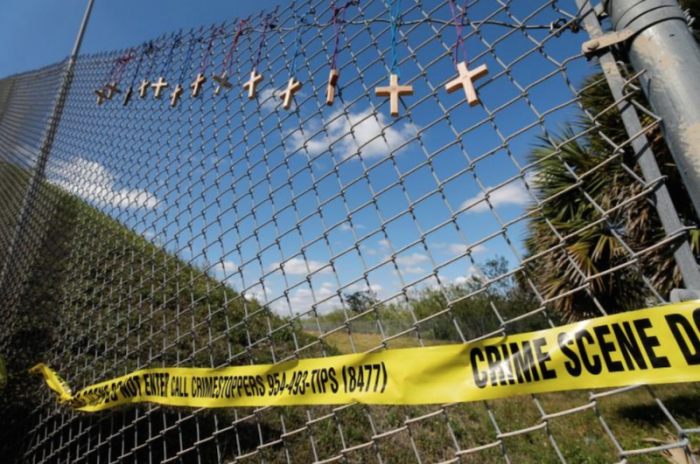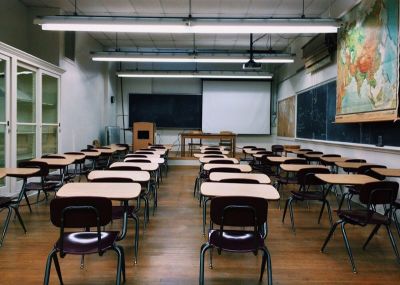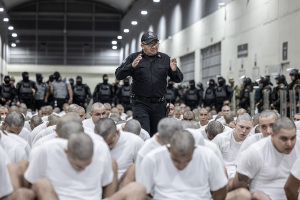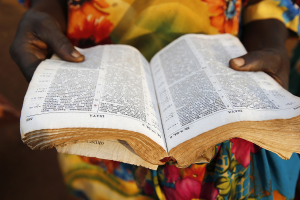Youth, Schools and Violence: What Does the Data Show?

Read part 1, part 2, part 3, part 4, part 5, part 6 and part 7 of The Christian Post's series on youth and school violence.
"I should be writing my college essay, not my will." This message was seen on a protest sign held by a student showcasing their frustration with the problem of school violence.
School shootings in Kentucky, Florida and Maryland this year have brought a growing awareness to the problem of violence in schools. The issue is a complex problem that brings passionate debate over topics like gun control, graphic entertainment, and morality among youth.
This article is part three of The Christian Post's series examining the many aspects of the issue, recognizing that school-based violence is a multipronged problem that goes beyond partisanship.
Data on the issue of school violence is not always clear. For example, a common statistic cited by news outlets and public figures is that, with the tragic event at Marjory Stoneman Douglas High School in Parkland, Florida, there have thus far been 18 school shootings since 2018 began.
The statistic comes from the nonprofit group Everytown for Gun Safety, which advocates for gun control reforms and curbing of firearms violence.
According to an analysis published Feb. 15 by The Washington Post, however, this statistic is deceptive because it includes any time a firearm has been discharged on a school campus.
"[A]s a basketball game was being played at a Michigan high school [in January 2018], someone fired several rounds from a gun in the parking lot. No one was injured, and it was past 8 p.m., well after classes had ended for the day, but Everytown still labeled it a school shooting," The Washington Post noted.

"The figures matter because gun-control activists use them as evidence in their fight for bans on assault weapons, stricter background checks and other legislation," The Washington Post added. "Gun rights groups seize on the faults in the data to undermine those arguments and, similarly, present skewed figures of their own."
Research into the rate of violence in schools indicates that overall violent activity has been declining over the past few decades, with school shootings seeing an increase in recent years, though still a rare event.
A spokesperson for the Centers for Disease Control and Prevention directed The Christian Post to a May 2017 report by the National Center for Education Statistics, titled "Indicators of School Crime and Safety: 2016."
The report found that from 1992 to 2015, the "total victimization rates" for students between the ages of 12 and 18 decreased both when they were in a school environment and elsewhere.
"The rate of violent victimization away from school declined from 94 victimizations per 1,000 students in 1992 to 11 per 1,000 in 2015. Serious violent victimizations at school declined from eight per 1,000 students in 1992 to four per 1,000 in 2015," noted the report.
The 2016 report also found that during the 2013–2014 school year, its latest academic year on record, there had been 26 homicides on school campuses. This is well below the 47 homicides reported for the 1992–1993 academic year, the earliest academic year reported on in the report.
The academic years from 1995 to 1998 reported homicide numbers in the 40s, while the academic years from 2009 to 2012 reported homicide numbers in the 20s.
The NCES numbers do not showcase an absolute decline. The academic year with the lowest number of homicides since 1992 was 2002–2003, with 25, while 2006–2007 was the highest with 48.
Denise C. Gottfredson, professor at the University of Maryland's Department of Criminal Justice and Criminology, echoed the findings of the NCES report in her comments to CP, adding that the "factors contributing to the drop in crime are not well understood."
"Studies suggest that very little of the drop has to do with more rigorous policing or more incarceration. Some evidence suggests that drops in substance use have contributed to lower crime rates," said Gottfredson.

Gottfredson also told CP that "most of the fatal school shootings have been perpetrated by school-aged males who have access to guns."
Gottfredson directed CP to research published by the CDC which noted that between July 1, 1992, and June 30, 1999, 218 of the 358 violent deaths at U.S. schools, both homicides and suicides, were committed by "student perpetrators."
The CDC research found that 93.5 percent of the "student perpetrators" for these violent events were men, with a median age of 16 years. The vast majority of these homicides (84.4 percent) were identified as "single-victim" events rather than "multiple-victim" (15.6 percent).
The CDC report also found that about one-quarter of the firearms used by the school shooters came from sources other than their home.
"The results of this study also indicate that it is not enough for parents to eliminate unsupervised access to firearms in their home; approximately 25 percent of the firearms used in school-associated homicides were obtained from friends or relatives," noted the CDC.
"Parents should consider discussing access to firearms and safe-storage practices with their relatives and the parents of their children's friends."
Amy Swearer, visiting legal fellow at the conservative think tank The Heritage Foundation, who is deeply involved in school safety and gun violence issues, directed CP to research by researchers at Northeastern University.
Northeastern University noted in an article published last month that "shooting incidents involving students have been declining since the 1990s."
Using data collected from sources including the FBI's Supplementary Homicide Report, Congressional Research Service, Stanford Geospatial Center and Stanford Libraries, and Everytown for Gun Safety, they found that four times as many students were killed in schools during the 1990s than today.

James Alan Fox, the Lipman Family professor of Criminology, Law, and Public Policy at Northeastern and one of the researchers, explained to the campus site that "more kids are killed each year from pool drownings or bicycle accidents."
"The thing to remember is that these are extremely rare events, and no matter what you can come up with to prevent it, the shooter will have a workaround," said Fox, who also expressed support for gun regulation ideas like banning bump stocks.
Swearer told CP that she believed there were multiple factors for this decline, including the general decline in violent crime seen in the United States and elsewhere in developed countries, and the overall increase in school security measures over the past 30 years.
"Every school is different, but common measures include locking doors, installing security cameras, requiring all visitors to be logged in at the administrative offices, hiring armed school resource officers, and using magnetometers," explained Swearer.
While overall school violence has been on the decline since the 1990s, mass school shootings have become more common in recent years.
Swearer told CP that over the past five years, school shootings have had a "slight increase" in occurrence. She cautioned that mass school shootings were still "extremely rare" events and that this "is not the first time the country has seen an increase of this type."
"Since 2013 and including Parkland, there have been five multiple-fatality shootings resulting in 27 fatalities, but between 1995 and 1999, there were seven multiple-fatality shootings resulting in 33 fatalities," explained Swearer.
"If you move the five-year period back to include 2012 (Newtown and Chadron) but exclude 2018 (Parkland and Marshall County, Kentucky,) it makes little difference to the frequency or fatality count."
Despite the overall decline in school violence, the United States maintains a higher firearms homicide rate than other developed nations.
The American Journal of Medicine published a study in 2016 that drew from data compiled in 2010 by the World Health Organization for "populous, high income countries."
According to the results, the study found that the United States' gun homicide rate was 25.2 times higher than other high-income nations, with the gun homicide rate for 15- to 24-year-olds being 49 times higher.
Peter Langman, clinical director of psychology at KidsPeace, is an expert on school violence. In an interview with The Christian Post, he said the United States "overwhelmingly" has "the majority of school shootings in the world."
A common trait among the various school shooters has been the presence of a broken home in their lives.
Professor Brad Wilcox, director of the National Marriage Project at the University of Virginia, wrote in a 2013 piece for National Review that there was a "connection between violence and broken homes," noting that his research found that boys raised by single mothers were nearly twice as likely to be delinquent as boys raised with fathers.
The connection between broken homes and school shootings is not determinative, however.
Langman found in a 2016 report titled "School Shooters: The Myth of the Stable Home" that of a sample of 56 school shootings, 18 percent of the perpetrators were raised in a stable two-parent home.
"In other words, 82 percent of the sample either grew up in dysfunctional families or without their parents together (for at least part of their lives)," Langman added in the report.
Next, CP will take a closer look at how the breakdown of the traditional American family is linked to the problem of school violence.





























